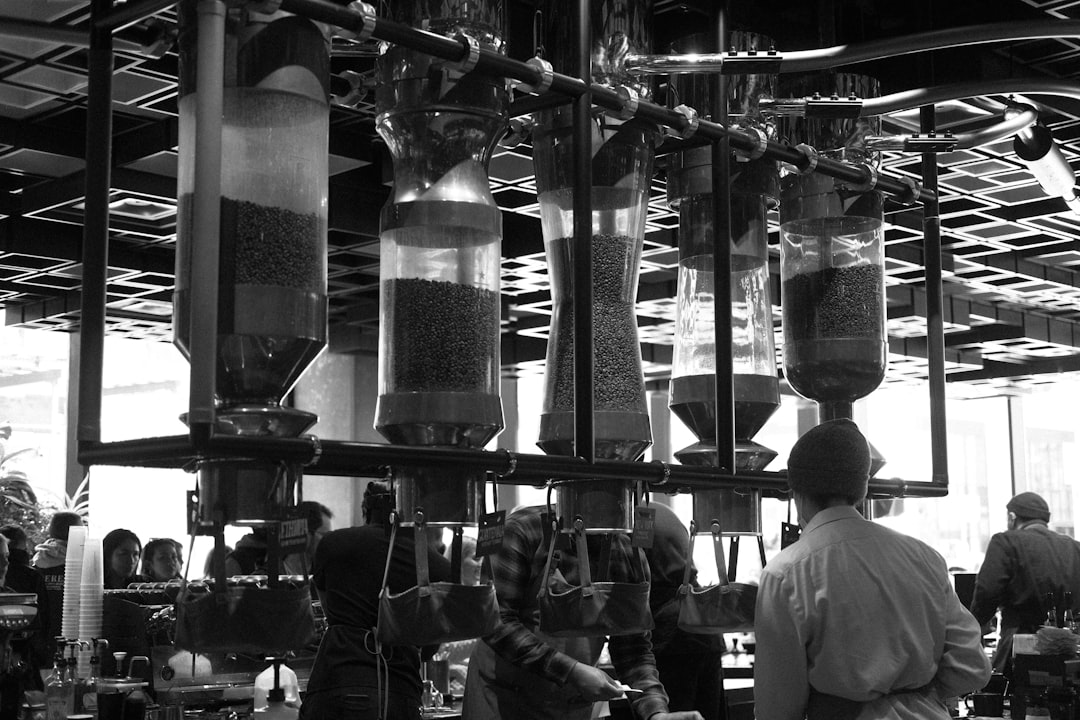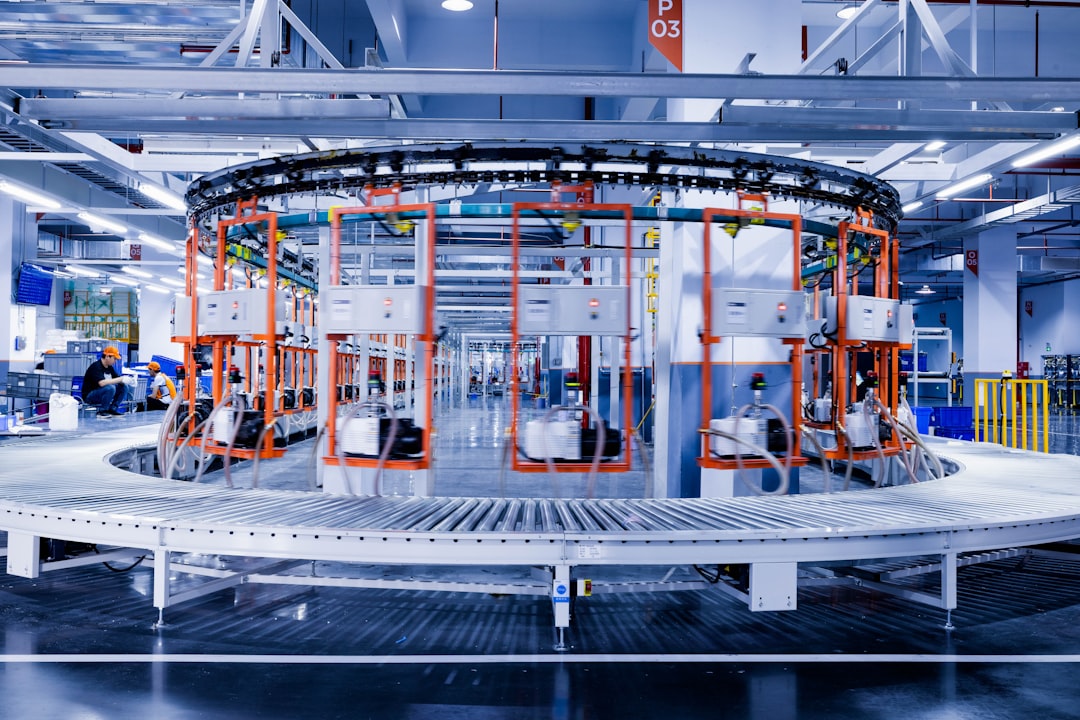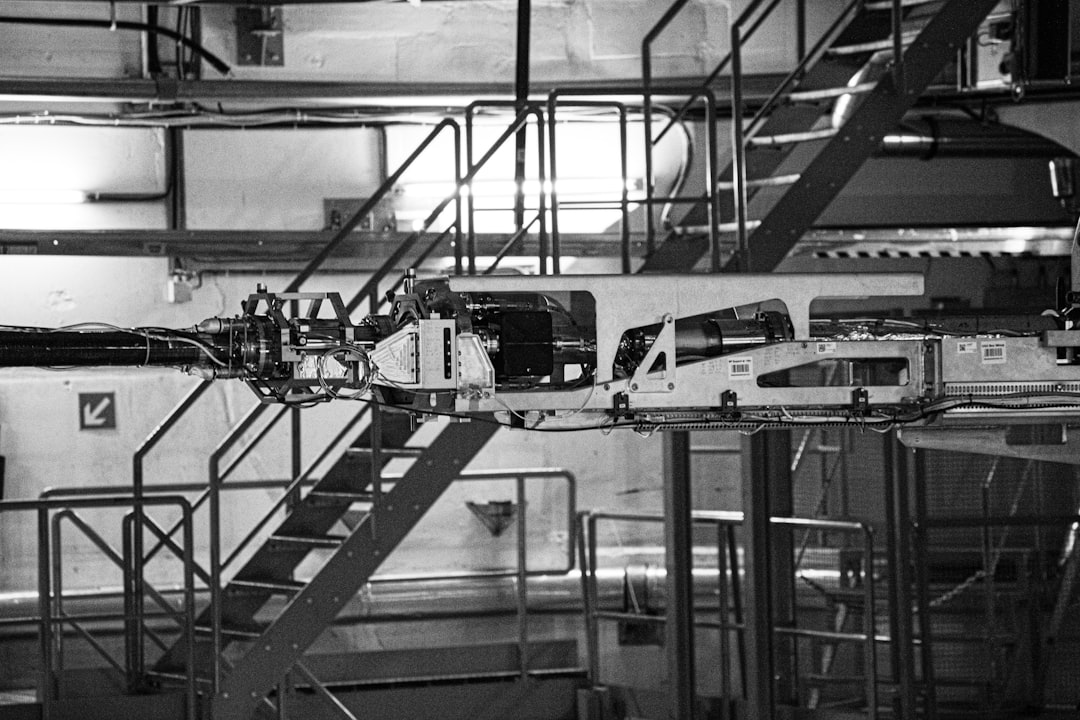

Engage prospects with a scan and streamline customer engagement with FREE QR code marketing tools by Sona – no strings attached!
Create a Free QR CodeFree consultation

No commitment

Engage prospects with a scan and streamline customer engagement with FREE QR code marketing tools by Sona – no strings attached!
Create a Free QR CodeFree consultation

No commitment
Industrial lubricating systems are essential for maintaining efficiency, minimizing equipment wear, and ensuring smooth operations across manufacturing and heavy industry sectors. As these systems become more complex and integrated with IoT, AI, and automation, the need for fast, secure, role-based access to current maintenance records, authentication resources, and live operational insight becomes critical. QR codes provide a practical physical-to-digital bridge that allows teams to access the right information at the right moment, from the shop floor to the supplier network.
For many operations and marketing leaders, a core frustration persists: valuable prospects and critical maintenance signals often slip through the cracks because traditional analog processes do not capture intent. Manual logs, outdated documentation, and siloed systems make it difficult to identify engaged users or high-fit companies. The result is higher downtime, missed upsell opportunities, and lower customer satisfaction. By standardizing QR-based workflows, organizations can tie each physical asset and touchpoint to a digital action, capturing data that fuels proactive service, real-time traceability, and stronger revenue attribution. See Sona’s blog post titled Single vs Multi-Touch Attribution Models.
The inability to connect physical assets with actionable data leads to lost opportunities and fragmented workflows. For example, high-value prospects might interact with packaging or signage yet never submit a form, and maintenance staff might perform critical checks that never make it to a central system. QR codes change that dynamic by making every interaction measurable, authenticated, and connected to a unified source of truth via serialized QR codes. When rolled out thoughtfully, QR initiatives empower teams to make better decisions faster and create a closed loop from scan to outcome across the entire lubricants lifecycle.

Connecting analog assets with digital intelligence is crucial for leaders facing incomplete or outdated data across their fleets and product lines. QR codes bridge this gap for industrial lubricating systems by giving maintenance teams, operators, and even marketing and sales functions a common data layer. A single scan can authenticate products, open maintenance logs, trigger reorders, or route a service request to the right team with full context. This lowers operational friction while creating visibility where it matters most.
To get the most out of QR codes, anchor them in the specific maintenance and business outcomes your organization cares about: uptime, compliance, safety, counterfeiting prevention, and customer growth. Align QR destinations with each role’s needs, from technicians seeking the latest procedure, to plant managers tracking service SLAs, to procurement teams monitoring supply integrity. With dynamic codes and centralized management platforms like Sona QR, you can adapt content as conditions change and analyze performance to continuously improve results. Start creating QR codes for free.
A practical example will illustrate the value: A technician scans a QR code on a centralized lubrication system. The scan auto-detects the asset ID, loads the latest maintenance procedure, and pre-populates a digital checklist that logs torque settings, viscosity checks, and filter replacements. If thresholds are exceeded, the form escalates the issue to the reliability engineer and opens a support ticket with supplier warranty data. Every step is recorded, authenticated, and connected to the asset’s full service history.

Most plants still rely on a patchwork of paper labels, binders, outdated PDFs, and unstructured spreadsheets to manage critical lubrication routines. These disjointed artifacts slow down technicians, increase the likelihood of errors, and create compliance exposure when audits require proof of process adherence. QR codes consolidate these assets into one dynamic, version-controlled destination per asset or product, ensuring the latest guidance is always one scan away, with measurable track and trace gains.
Modern QR deployments also formalize data capture at the source. Instead of handwritten notes that never reach a central system, scan-initiated forms standardize inputs like date, time, ambient temperature, lubricant specification, and operator ID. The result is granular, searchable, and audit-ready records that improve both reliability and regulatory compliance.
Industrial lubricating systems struggle with missing engagement signals, untracked interactions, and disjointed workflows. QR codes solve these challenges by bridging the offline-to-online gap that surrounds equipment, packaging, and field service. With a scan, your team can log an event, validate a product, or access documentation, while your systems capture who scanned, where, and why. This adds clarity and speed to decision-making and turns anonymous activity into actionable data.
The benefits extend beyond operations. Marketing and commercial teams can connect packaging scans to post-sale engagement, segment users by role, and trigger targeted outreach that supports onboarding, training, or contract expansion. By treating every scan as a first-party data point, you build a reliable engine for retargeting, upselling, and customer success across your installed base using product packaging QR codes.
Consider a facility that transforms its lubricant packaging and equipment labels with QR codes. Authentication data can be updated in real time when regulation changes occur. High-frequency scanners like lead operators and maintenance supervisors become visible to the system, enabling proactive outreach for service plans, fluid analysis programs, or training refreshers. Downtime drops, safety improves, and commercial teams act on reliable signals instead of assumptions.

Selecting the right QR format is essential. Industrial environments demand formats that deliver speed, clarity, and security, while supporting granular analytics at the asset and batch level. Most programs benefit from dynamic QR codes that can be edited over time and that feed scan data back to your analytics and CRM.
Choose destinations based on job-to-be-done. A technician on a catwalk needs a mobile-friendly SOP and fault tree. A procurement manager needs the reorder portal. An auditor needs tamper-proof logs and certificates. Design for the environment and the user role to maximize success.
Dynamic QR codes are generally preferred for industrial deployments because they support content updates, A/B testing of destinations, granular analytics by code, and robust integrations with CRM or service desk tools. Static codes can be used for fixed destinations like a safety poster PDF or a permanent Wi-Fi credential, but limit measurement and flexibility.
The biggest wins come from embedding QR workflows at high-impact physical touchpoints and aligning them to operational and commercial goals. Prioritize placements that remove friction from routine activities and that reliably connect offline events to your digital systems. Map each placement to a clear next action and to a measurable outcome.
As you scale, standardize your label designs, calls to action, and role-based content. Consistency boosts adoption, reduces training time, and makes analytics more meaningful. Think beyond the plant floor too. Packaging, trade shows, and direct mail can all feed high-quality first-party data back to your pipeline.

A focused set of QR use cases can address operational bottlenecks and create new revenue opportunities. Start with three to five high-value workflows, then expand once adoption is established. Below are foundational examples that align with common industrial lubricants challenges.
Each use case should specify the destination, the action triggered, and the data captured. By designing for both usability and analytics, you ensure each scan contributes to uptime, compliance, and growth.
Expand on these with calibration support, warranty registrations, or training certifications. Each deployment should include clear CTAs and optimized mobile experiences that match the job-site context.
Every QR scan is a first-party signal. For industrial lubricating systems, that signal captures who is engaged, which assets they use, and where friction exists. By deploying QR codes across lifecycle stages and physical placements, you can automatically build segmented audiences that fuel precise retargeting and follow-up.
This strategy unlocks value beyond the plant floor. Operations can identify training needs and maintenance risks. Marketing and sales can pinpoint upsell opportunities for service plans, fluid analysis, or premium products. Customer success teams can re-engage accounts with declining scan activity or missed maintenance intervals. For execution ideas, see Sona’s Playbook titled Intent-Driven Retargeting.
For example, high-frequency scanners at a particular site may receive invitations to a lubrication best-practices workshop and offers for predictive maintenance analytics. Meanwhile, accounts with declining scans can be nurtured with diagnostics checks, safety refreshers, and onsite training options.
QR codes are the connective tissue across offline and online channels. When implemented across packaging, print collateral, events, and facility signage, they create a seamless experience that moves industrial buyers from awareness to action while generating measurable data at each step. This eliminates the guesswork that traditionally surrounds physical media and in-person engagements.
A coordinated QR strategy also improves message consistency. Instead of conflicting PDFs and outdated brochures, dynamic QR destinations ensure everyone sees current content. By centralizing management in platforms like Sona QR, you gain the ability to update messaging across hundreds of placements with a single change and to analyze channel-level performance in real time. Use digital signage to bring analytics and real-time content into high-traffic areas.
By orchestrating QR codes across channels and syncing their data to your CRM, you can diagnose message inconsistencies, prevent wasted spend, and engage prospects at the right stage of their journey. Centralized management enables you to optimize placements and content continuously as you learn which combinations drive the strongest results.
A well-structured campaign turns QR codes into reliable performance drivers. Start by defining the outcome, then align code types, destinations, and placements to measurable goals. Field testing in real environments is essential. Industrial sites introduce unique scanning variables like glare, dust, and PPE constraints, so iterate until the experience is frictionless.
This checklist shows how to design, deploy, and optimize QR campaigns for industrial lubricating systems. Use it to align cross-functional teams and to ensure every scan contributes to uptime, safety, and growth.
By following this process, teams systematically capture every relevant signal and drive real operational and marketing impact from each scan event. Over time, you will build a robust dataset that improves planning, forecasting, and performance across the entire lubricants lifecycle.

Attributing business outcomes to physical-world activity has long been a challenge in industrial settings. QR-enabled tracking changes that equation by creating a measurable chain of events from the moment a code is scanned. When each code is tied to a specific asset, package, or campaign, you can connect scans to service bookings, reorders, and authentications, then calculate ROI with confidence.
The key is to integrate scan data with your existing systems. By syncing Sona QR with tools like Salesforce, HubSpot, ServiceNow, or your CMMS, you can attribute actions and revenue to the originating scan, enrich contact records, and automate follow-up. This enables multi-touch attribution that includes the shop floor and the supply chain, not just the website.
Sona QR makes this practical by capturing real-world engagement data and connecting it to pipeline and revenue in Sona.com. You can map scans to known buyers through identity resolution, link them to website sessions, emails, and ads, and see how QR engagement contributes to opportunities and closed-won deals. For deeper methodology, read Sona’s blog post titled The Importance of Accurate Revenue Attribution. This turns QR codes from simple convenience tools into core components of your performance and reliability strategy.
Scaling QR success requires a blend of technical choices and change management. Focus on creating consistent experiences, training teams, and linking scans to automated workflows. When operators trust that scans lead to useful, fast outcomes, adoption grows, and your dataset becomes richer and more reliable.
Select tips that align with your most common media: equipment labels, packaging, facility signage, and trade show collateral. Pair each tip with a concrete action and, where possible, a simple automation that makes the experience feel instant and helpful.
In addition, look for creative ways to integrate QR codes into invoices for consumable replenishment, into calibration stickers for monitoring due dates, or into visitor badges for access to safety training. Each addition expands the dataset and increases your ability to act in real time.
The complexities facing industrial lubricating systems today, like missed opportunities, counterfeiting risk, fragmented data, and disconnected engagement, require a unified approach. QR codes, deployed strategically, transform every surface and package into an actionable digital touchpoint. They help you close the loop between physical activity and business outcomes, unlocking traceability, efficiency, and customer insight that drive both top-line growth and bottom-line reliability.
Industrial lubricating systems are in the midst of digital transformation. QR codes are becoming indispensable for bridging assets and actionable data, enabling teams to address lost engagement, insufficient traceability, and fragmented targeting. Applied thoughtfully across channels and assets, QR initiatives equip teams to anticipate needs, optimize spend, and sustain competitive advantage. With Sona QR, you can generate and manage dynamic codes, monitor performance, sync data to your CRM, and attribute revenue to scans. Start creating QR codes for free.
QR codes have revolutionized industrial lubricating systems by transforming maintenance and asset management into seamless, data-driven processes. Whether it’s enabling instant access to lubrication guidelines, improving equipment uptime, or streamlining technician workflows, QR codes replace cumbersome manual tracking with quick, mobile-friendly scans that unlock critical information on demand. Imagine having immediate insights into lubrication schedules and system status right at your fingertips—reducing downtime and boosting operational efficiency with every scan.
With Sona QR, you can effortlessly create dynamic, trackable QR codes tailored for industrial lubricating applications. Update technical data instantly without costly reprints, monitor usage patterns in real time, and link every scan to actionable maintenance metrics. This means smarter resource allocation, faster response times, and measurable improvements in equipment reliability.
Start for free with Sona QR today and turn every scan into a catalyst for optimized lubrication management and superior industrial performance.
Key components include centralized lubrication systems, grease points, filtration units, lubricant packaging with unique QR codes, and equipment labels linking to maintenance logs and operational data.
They minimize equipment wear, reduce downtime by providing instant access to maintenance procedures and logs, streamline workflows with QR code-triggered actions, and enable real-time operational insights.
Advancements include integration with IoT, AI, automation, and the use of dynamic QR codes for fast, secure, role-based access to live maintenance records, authentication, and traceability.
They contribute by reducing counterfeiting through authenticated lubricant traceability, lowering waste with accurate maintenance, and enabling dynamic updates to protocols without reprinting physical labels.
QR codes create a physical-to-digital bridge that enables instant product authentication, detailed usage logs, real-time maintenance data access, improved compliance, reduced downtime, and enhanced customer insights.
Use Sona QR's trackable codes to improve customer acquisition and engagement today.
Create Your FREE Trackable QR Code in SecondsJoin results-focused teams combining Sona Platform automation with advanced Google Ads strategies to scale lead generation

Connect your existing CRM

Free Account Enrichment

No setup fees
No commitment required

Free consultation

Get a custom Google Ads roadmap for your business






Launch campaigns that generate qualified leads in 30 days or less.
